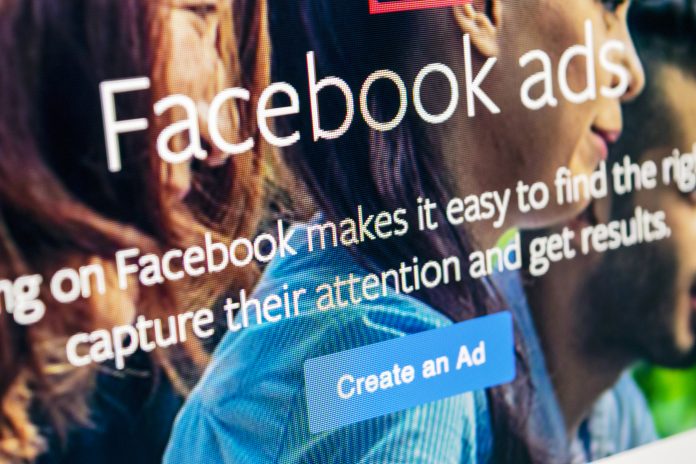Andy Woods, Design Director, Rouge Media, explores what “influence government” really means, how technology is changing and whether its rising use is a risk to the public
The psychology of selling is something we all experience, every day. Even if you don’t notice it, your behaviour, decisions, actions and even emotions are being influenced by the clever tactics of marketers and designers.
And this practice isn’t just seen in the private sector. National and local governments, together with NGOs, are also influencing public thinking and finding new, more effective ways of doing so.
According to a recent study by the Scottish Centre for Crime and Justice Research (SCCJR), national and local governments are increasingly using targeted ads on social media and search engines to nudge public behaviour.
Influence government is nothing new
“Nudging” (i.e. creating change through influence) has been a key tactic used by politicians since politics began. And it’s an extremely powerful technique – just look at the infamous wartime posters and propaganda from the First World War.
Looking at modern history in the UK, the Ministry of Information (MOI) was first set up towards the end of the First World War and played a huge part in creating propaganda to influence and inform the populous of the UK – and to great success.
The MOI was dissolved in 1946, with some of its work moving to the Central Office of Information (COI), which was itself dissolved in 2011. Interestingly, the Behavioural Insights Team was created shortly after, which is independent of UK government but partly owned by the Cabinet Office.
These departments all have one aim in common – influencing the public. So, in the same way as wartime posters encouraged Brits to enlist and support the national effort, now is the turn of digital media.
Nudging 2.0
The combination of nudge theory and powerful advertising technologies can make efforts to influence the public seem more sinister than they are. Especially as we’re growing increasingly aware of our digital privacy rights and the rise of surveillance capitalism where personal data is the new currency.
While the concept and aim remain the same, in nudging 2.0, campaigns to alter public opinion and behaviour are supercharged by technology.
Taking nudge theory back to basics, through clever design and communication, the aim is to nudge someone towards taking a particular action. The key to success is understanding the audience and what is going to trigger them into action.
You have to first define the outcome (i.e. what you want to achieve, such as increasing vaccination among a demographic group), understand the context and the audience (why are they not getting vaccinated and how would it benefit them?), create your strategy for reaching them (what do they enjoy, what do they read) and launch your campaign.
The part of the process that turns this from guesswork into a science-backed strategy is building in reporting and analytics. This allows organisations – be it businesses, governments or third sector – to test, learn, adapt and repeat. It’s a process of continuous adaptation until you find what works.
The evolution of targeted ads on social media and search engines has made this process more efficient and effective. You can now learn everything you want to about an audience by their digital profiles and behaviours and create messages that are A/B tested and adapted on a personalised basis – in real-time.
A new era of influence
The way governments communicate with their citizens is changing. And so too are the tools at their disposal, most notably personalised advertising and online targeting.
Techniques and technologies have moved on since The Green Cross Code of the 1970s to prompt pedestrians to be road-smart. Attempts today are no longer confined to TV adverts, billboards or spokespeople. Although, as seen during the COVID-19 crisis (“Hands, Face, Space”, they still do play an important role.
Today, policymakers can take a message – be it promoting energy-saving, healthier food choices, or anti-radicalisation – and deliver it on a personal level that will resonate best with an audience segment.
A perfect feedback loop is created, where data indicates whether the message is being seen, understand and acted upon, and if not, the strategy is adapted at speed.
Some recent examples of this new era of influence are the government using Amazon’s targeting tools to make your Alexa deliver fire safety advice straight after you’ve purchased a candle via the platform. Another is a set of anti-knife crime adverts online, targeted at fans of drill music on YouTube.
What are the risks?
While there are positive intentions behind most, if not all, public influence campaigns, there are questions around the ethical use of personal data and what constitutes going “too far” to achieve the intended outcome.
One issue is such campaigns are often outsourced to third-party marketing agencies and are dreamed up and run by a small group of communication officials within different government departments. Some argue that because these are frontline policy interventions, they should be subject to the same public debate, scrutiny and accountability as other policies.
Influence government can also sometimes have the wrong type of influence. The researchers at the SCCJR pulled the example of the anti-crime campaign using YouTube interests to target young people. This highly-targeted campaign could mean young at-risk individuals are seeing online adverts about knife crime more often than their peers, leaving that person thinking the threat of knife crime is growing and they need to protect themselves.
Despite the ethical questions government ‘nudging’ poses, it’s worth considering the alternative. If the government weren’t jumping on this pre-existing trend, it’s unlikely the power of decision will fall back into the laps of civilians, but rather other influential naysayers, who inevitably could be led people to fall into dangerous traps.
As long as public interest is at the heart of influential governing, it can be a positive way to enact change.
As what’s possible with social media, search engines and powerful new advertising tools grows, we must continue to question, understand and improve public influence campaigns to promote positive change in society.











